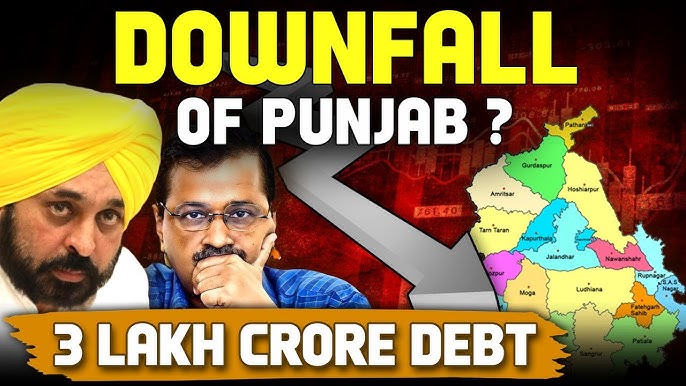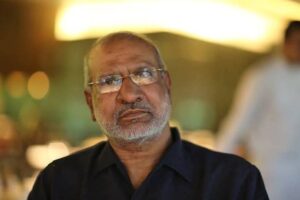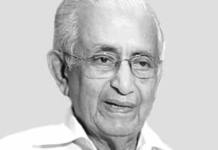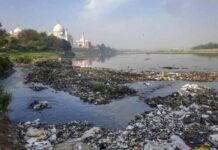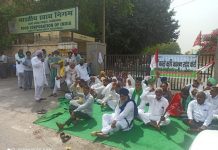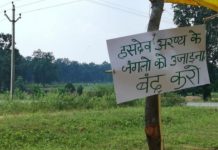— MOHAN GURUSWAMY —
There was a time when Punjab was India’s model state. It was number one in almost every field. Then people like Prakash Singh Badal, Beant Singh and Amrinder Singh happened to Punjab. From being the role model state it has now become a disaster zone and a national burden. It has been saddled with corrupt governments for several decades now. The Khalistani insurgency cost it more than just in lives. Good governance norms went out of the window too. The Badal family has taken venality and bad governance to a new level.
The Badal and family managing agency in Punjab has done better than many of our industrialists in fraudulently extracting funds from our PSU banks by borrowing for its food purchase scheme against non-existent stocks or by disposing off hypothecated stocks. The RBI has now ordered the lending PSU banks to declare the advances as NPA’s. It is learnt that about Rs.20,000 crores worth food stocks are not in stock. They either were never there or hypothecated stocks were disposed or both. The hole is huge and the banks will be unable to lend the Punjab Government more money to further perpetrate the fraud.
So who comes to its rescue? It is the friendly Central Government, which is now going to give it cash credit of Rs.20,000 crores so that “food purchases’ can go on as usual. It was only last week that the Supreme Court had to tersely order the Central Government to immediately release budgeted MNREGA funds for famine relief works in acutely drought hit regions like Marathwada. Consequently Rs.12,000 crores was reluctantly released. Maharashtra has a BJP led government, but unlike Punjab it doesn’t have elections soon. So BJP ministers like Eknath Khadse can use scarce water to bind the dust down at helipads and Pankaja Munde, streaked hair and bejeweled hands and all, can take selfies at drought relief works in Latur. But in Punjab the viability of the Badal business is seriously challenged and the rejected MP aspirant from Amritsar, who is now the Finance Minister, responded with alacrity to help his friends tide over a tight spot.
Despite this the Punjab Civil Supplies and Food Minister, Adarsh Prakash Singh Kairon, a man with a prominent and known lineage, has the temerity to say: “The food purchase scheme is not a profitable proposition. Punjab is mainly doing it in the national interest.” The notion that Punjab feeds India is quite absurd now. India has for a few decades now produced much more food grains than it needs. India exported an Foodgrains worth an average of Rs.6000 crores a year since 1991 and last year it touched Rs.27,000 crores. The production has been in the vicinity of 260 million tons during the past three years, despite the droughts. India has food reserves of 49 million tons worth Rs.50,000 crores and twice more than is needed.
So it is actually the other way around. The rest of India supports Punjab, with this absurd minimum support price (MSP) scheme, which is actually an above the market price scheme. This combined with the PDS of low priced cereals is actually a gigantic subsidy scheme. The total subsidies allocation in Budget 2016 is Rs. 2,50,433.00 crores, of which more than half goes towards food subsidy and another quarter goes for fertilizer subsidy. The bulk of the procurement accrues in the states of Punjab, Haryana, AP and MP. Which means the bulk of the MSP subsidy accumulates here.
There is no doubt that Punjab is a major food grains production centre, but the notion that it feeds India is quite exaggerated. In 2015 of the total national food grains production was 264 million tons, of which Punjab produced 27.4 million tons or about 10%. Admittedly Punjab’s productivity is much higher than the rest of the country’s as it accounts for only about 5% of the 54 million hectares of irrigated farmland..
The claims of the Punjab government too foster this fiction. Its website claims “ It contributes nearly two thirds to the total production of food grains and a third of milk production in the country. It is the leading producer of wheat, thereby contributing to the national food security. Even though Punjabis account for less than 2.5% of the Indian population, they are one of the most prosperous races in India. Their per capita income is twice the national average.” The national per capita income at current prices is Rs.74000 and Punjab’s is Rs.92,000. Yet most of us have internalized the long gone story of Punjab standing between India and starvation, and Punjab being the most prosperous state in the country.
God and this country have both been good to Punjab. Today 85.15% of all land in Punjab is arable and 89.72% of it is with perennial irrigation. More than half of this is due to the huge central government projects, Bhakra Nangal being the most notable among them. The British in their quest for land revenue rightly chose Punjab for special attention. They invested in its irrigation. But after 1947 this trend accelerated. In this year 1955 the total national outlay for irrigation was Rs.29,106.30 lakhs. Of this Punjab got Rs.10,952.10 lakhs or 37.62%. By contrast Bihar got only Rs.1,323.30 lakhs, which is only 4.54% of the irrigation outlay. The Bhakra Nangal dam, one of Jawaharlal Nehru’s grandest temples of modern India, planned with an outlay of Rs.7,750 lakhs, alone irrigates 1.44 million hectares or about 40% of Punjab’s net irrigated area. The consequences of this bounty are manifold.
The spectrum of regional inequalities in India is a very wide one. Punjab and Bihar represent the two ends of the wide spectrum. Though this might even have been the case historically, a study of state GDP’s in the decades after independence reveals that the width of the spectrum has only widened. In 1965 Punjab’s per capita income was Rs.562 and was 1.7 times that of Bihar’s Rs.332. Punjab now has a per capita income of Rs. 92,000 and Bihar Rs.31.000, or about 3:1. But other changes have also set in. Once India’s most prosperous state, it now lags behind Haryana, Maharashtra, Gujarat, Kerala and Telangana as is about par with the neighboring hill state of Himachal Pradesh.
Punjab has all the bounties nature can give, and it has had more than its rightful share of central government assistance, not just in terms of food procurement and subsidies but also by way of employment. Punjab has also benefited by a disproportionately large recruitment into the armed and paramilitary forces giving most rural families a second stream of income. Each year about 60,000 Punjabi officers and men retire from the armed forces and over a million draw pensions. Yet Punjab is afflicted with a severe blight. A study by the department of Social Security Development of Women and Children found that 67 percent households in Punjab have at least one person addicted to drugs. Yet another study by the Narcotics Bureau discovered that almost 40% of men in Punjab are addicted to drugs.
So what has brought Punjab to this pass? One is that Punjab has been reeling under bad governments. Its politicians and their bureaucratic fellow conspirators, irrespective of party affiliations, have been among the country’s most venal and corrupt. A Punjab Police SP facilitated the attack on the Pathankot airbase by Pakistani terrorists. The silence that has descended around him is understandable. According to a former Punjab DGP, a few years ago the intelligence department had compiled a list of the drug barons. This list had names of powerful politicians from every political party and police officials at every level. Salwinder Singh is only the tip of the iceberg. Unless Punjab gets a better government the downfall will continue.
Discover more from समता मार्ग
Subscribe to get the latest posts sent to your email.

